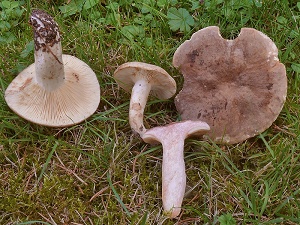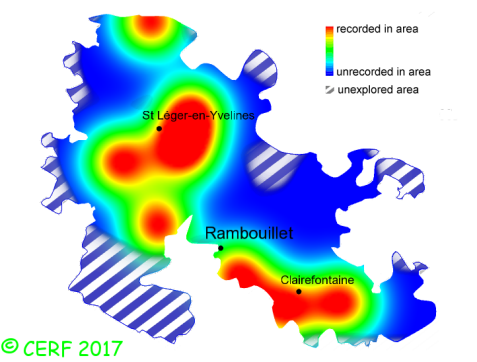| Lactarius azonites (Bull.) Fr. |
|
|
|
|
|
|
The cap is greyish-grey to coffee-brown, with whitish discoloured patches especially towards centre, convex then flat to slightly depressed, a bit irregular; its margin is smooth, obtuse, whitish. The cap surface is smooth, velvety, matt, non viscid. The stem is white then cream, pale pink in wounds, without ring. The flesh is white, turning strongly but slowly pink when exposed to air (in 2 to 5 mns); its taste is mild to slightly hot; the odour is faint, fruity, then of coconut; its texture is grainy (breaking like a chalk stick), exuding when cut an abundant white milk, unchanging if isolated, but becoming pink on the gills and flesh. The gills are white then ochre to buff, stained with salmon pink, adnate to decurrent, crowded at first, some of them forked . The spore print is cream to ochre (E). This species is mycorrhizal. It grows on the ground, in mixed or deciduous woods, on a rather calcareous soil, most of the time with oak and beech. The fruiting period takes place from July to November.
Chemical tests : none. Distinctive features : white stem contrasting with grey-brown cap; white flesh becoming slowly pink when exposed to air, exuding white latex not changing in air but becoming pinkish on flesh or gills; taste mild to slightly acrid Lactarius azonites is quite rare and scattered in the forest of Rambouillet, and is infrequent, more generally speaking . | ||
|
page updated on 14/01/18

